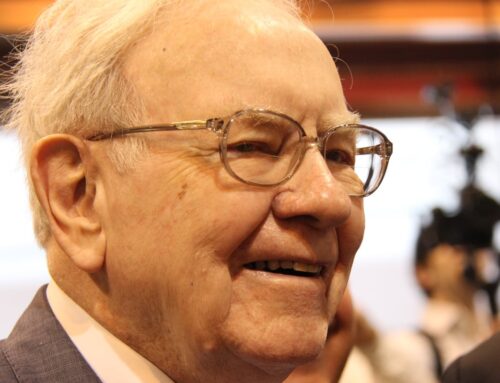Are Amazon’s New Vulcan Robots Revolutionizing Warehouse Efficiency?
May 7, 2025
The company has been testing the bots in a warehouse in Germany
Evan Ackerman is IEEE Spectrum’s robotics editor.

While most of warehouse robotics focuses on the problem of picking items out of bins, Amazon has also been working on stowing items into bins, which is a much different challenge.
At an event in Dortmund, Germanytoday, Amazon announced a new robotic system called Vulcan, which the company is calling “its first robotic system with a genuine sense of touch—designed to transform how robots interact with the physical world.” In the short to medium term, the physical world that Amazon is most concerned with is its warehouses, and Vulcan is designed to assist (or take over, depending on your perspective) with stowing and picking items in its mobile robotic inventory system.
In two upcoming papers in IEEE Transactions on Robotics, Amazon researchers describe how both the stowing and picking side of the system operates. We covered stowing in detail a couple years ago, when we spoke with Aaron Parness, the director of applied science at Amazon Robotics. Parness and his team have made a lot of progress on stowing since then, improving speed and reliability over more than 500,000 stows in operational warehouses to the point where the average stowing robots is now slightly faster than the average stowing human. We spoke with Parness to get an update on stowing.
Optimizing Amazon’s Stowing Process
Stowing is the process by which Amazon brings products into its warehouses and adds them to its inventory so that you can order them. Not surprisingly, Amazon has gone to extreme lengths to optimize this process to maximize efficiency in both space and time. Human stowers are presented with a mobile robotic pod full of fabric cubbies (bins) with elastic bands across the front of them to keep stuff from falling out. The human’s job is to find a promising space in a bin, pull the plastic band aside, and stuff the thing into that space. The item’s new home is recorded in Amazon’s system, the pod then drives back into the warehouse, and the next pod comes along, ready for the next item.
 Different manipulation tools are used to interact with human-optimized bins.Amazon
Different manipulation tools are used to interact with human-optimized bins.Amazon
The new paper on stowing includes some interesting numbers about Amazon’s inventory handling process that helps put the scale of the problem in perspective. More than 14 billion items are stowed by hand every year at Amazon warehouses. Amazon is hoping that Vulcan robots will be able to stow 80 percent of these items at a rate of 300 items per hour, while operating 20 hours per day. It’s a very, very high bar.
After a lot of practice, Amazon’s robots are now quite good at the stowing task. Parness tells us that the stow system is operating three times as fast as it was 18 months ago, meaning that it’s actually a little bit faster than an average human. This is exciting, but as Parness explains, expert humans still put the robots to shame. “The fastest humans at this task are like Olympic athletes. They’re far faster than the robots, and they’re able to store items in pods at much higher densities.” High density is important because it means that more stuff can fit into warehouses that are physically closer to more people, which is especially relevant in urban areas where space is at a premium. The best humans can get very creative when it comes to this physical three-dimensional “Tetris-ing,” which the robots are still working on.
Where robots do excel is planning ahead, and this is likely why the average robot stower is now able to outpace the average human stower—Tetris-ing is a mental process, too. In the same way that good Tetris players are thinking about where the next piece is going to go, not just the current piece, robots are able to leverage a lot more information than humans can to optimize what gets stowed where and when, says Parness. “When you’re a person doing this task, you’ve got a buffer of 20 or 30 items, and you’re looking for an opportunity to fit those items into different bins, and having to remember which item might go into which space. But the robot knows all of the properties of all of our items at once, and we can also look at all of the bins at the same time along with the bins in the next couple of pods that are coming up. So we can do this optimization over the whole set of information in 100 milliseconds.”
Essentially, robots are far better at optimization within the planning side of Tetrising, while humans are (still) far better at the manipulation side, but that gap is closing as robots get more experienced at operating in clutter and contact. Amazon has had Vulcan stowing robots operating for over a year in live warehouses in Germany and Washington state to collect training data, and those robots have successfully stowed hundreds of thousands of items.
- Team Delft Wins Amazon Picking Challenge ›
- Amazon Acquires Kiva Systems for $775 Million ›
- Stowing Is a “Beautiful Problem” That Amazon Is Solving With Robots ›
Search
RECENT PRESS RELEASES
China’s green tech revolution will outlast geopolitics: Arif Aga
SWI Editorial Staff2025-12-13T20:14:43-08:00December 13, 2025|
Column: Virginia’s future growth depends on energy diversity
SWI Editorial Staff2025-12-13T20:14:09-08:00December 13, 2025|
Want to Start the New Investing Year Off Right? 3 Warren Buffett-Inspired Moves to Make Be
SWI Editorial Staff2025-12-13T19:23:38-08:00December 13, 2025|
Risk-loving Korean investors made to watch training video before trading
SWI Editorial Staff2025-12-13T19:23:06-08:00December 13, 2025|
Pinnapuram Integrated Renewable Energy Project transforms barren land into world’s largest
SWI Editorial Staff2025-12-13T18:20:39-08:00December 13, 2025|
Athena Bitcoin Highlights the Power of Decentralization as the World Reflects on Satoshi N
SWI Editorial Staff2025-12-13T18:19:37-08:00December 13, 2025|
Related Post




